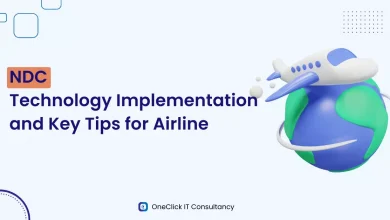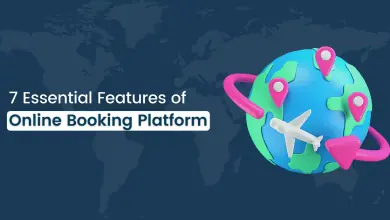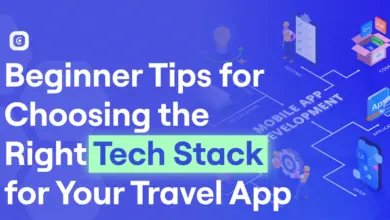Global Distribution System (GDS) for your Travel Industry
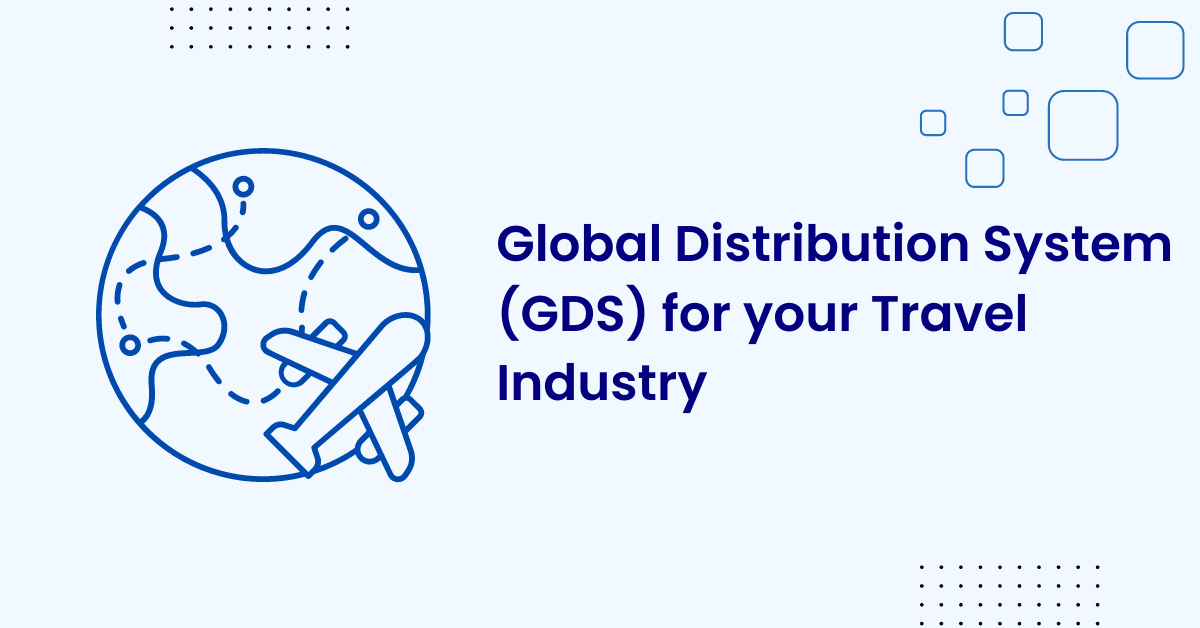
Understanding GDS and its Importance
What is GDS system? A GDS or Global Distribution System is a computer-based reservation network that interfaces travel suppliers which include: airlines, hotels, car rentals, and other services with travel agencies and other businesses in the travel industry. The GDS system allows users to conveniently and actively look for and book travel distribution services like flights, hotels, and car rentals.
Importance of GDSs in the Travel Sector
What is GDS in travel industry? A Global Distribution System for hotels, airlines, and other travel services holds a crucial position in the travel distribution system. It connects travel suppliers with travel agents and businesses, facilitating seamless GDS integration. This enhances the efficiency, speed, and transparency of the travel GDS systems, ensuring convenient travel distribution services for customers.
Primary impacts of GDS systems on the Travel Sector
Centralized Travel Information Hub
A GDS travel system serves as a central repository for an extensive range of travel-related data from diverse suppliers. This consolidated global distribution software allows travel GDS software users to easily search, compare, and book travel products.
Real-time Booking Facilitation
A GDS booking system allows travel agents and businesses to carry out real-time bookings of travel services. This capability ensures that travelers can make speedy and hassle-free bookings, even when making arrangements at the eleventh hour.
Enhanced Efficiency and Transparency
By providing a unified inventory system used by travel agencies, the GDS system contributes to streamlining the travel market. The available tools encourage a more systematic and transparent travel environment by easing the challenges which come with comparing and booking different services from multiple suppliers.
To sum up, GDS systems are integrated into the entire system of the travel industry. They assist in organizing the services concerned with the booking of global distribution services and facilitate the emergence of a systematic, organized, free market for the travelers and the businesses.
Advantages of GDS Application for OTAs
The reason why Online Travel Agencies (OTAs) rely on GDS integration is because GDS systems offer OTAs a plethora of travel options which assists them in providing the best possible options for the travel needs of their clients. The advantages of Global Distribution System ( GDS ) include the following:
Global Outreach
GDS systems establish a global network linking OTAs to diverse travel suppliers worldwide. This inventory system used by travel agencies empowers OTAs to provide a broad spectrum of travel services from various corners of the globe. This helps OTAs to offer their clients an extensive selection of travel choices irrespective of their location.
Functions of Data Analytics
A Travel GDS software provides OTAs with sophisticated data analytics capabilities for monitoring and analyzing their operational metrics. This data can be used to improve marketing efforts, adjust advertising prices, and issue business decisions that are favorable to the market and customers.
Strategic Partnerships
GDS api integration enhances the synergy between OTAs and global distribution system for hotels, payment processors, and marketing tools, resulting in efficiency and service delivery.
Legal Compliance
Compliance with different data security and privacy regulations is another feature of GDS systems. OTAs looking to avoid fines and legal non-compliance consequences can team up with compliant GDS systems.

Increased Profitability
Collaboration with GDS systems brings numerous cost benefits, including booking fee and commission payments. On the whole, these benefits are likely to strengthen profit margins and enhance competitive advantage.
OTAs save on booking commissions and fees due to airline GDS and global distribution software, which increases profit margins.
Real-time Information Accessibility
Access to current inventories and prices is available through GDS systems. This allows OTAs to offer their clients the most current travel options available. This timely information equips OTAs with a competitive edge, as they can offer travelers the latest and most relevant choices.
Access to real-time information
The GDS booking system streamlines the booking procedure, simplifying travel arrangement reservations for customers. Furthermore, they offer the convenience of immediate confirmations, which significantly enhances customer satisfaction by providing a sense of assurance and promptness in their travel plans.
GDS systems provide the necessary infrastructure to allow smooth communication between the travel agencies and the suppliers. The GDS systems serve the interests of the OTAs and the travelers. With GDS, OTAs can access wider markets, improve their operational efficiency, and lower operational costs. These advantages enable OTAs to lower their prices and improve their services in travel distribution.
Key Players in the GDS Market
As reported by Transparency Market Research, the GDS global distribution system market held a value of US$ 4.7 billion in 2021 and is projected to display a Compound Annual Growth Rate of 4.3% during the period from 2022 to 2031. The study also predicts that the global GDS market will reach a value of US$ 7 billion by the conclusion of 2031. The best global distribution system providers in the industry are:
Amadeus
Amadeus, one of the best global distribution system provider, delivers a spectrum of travel distribution services tailored for the travel industry. Operating on a global scale, it grants access to an extensive array of travel suppliers including airlines, hotels, and car rental companies.
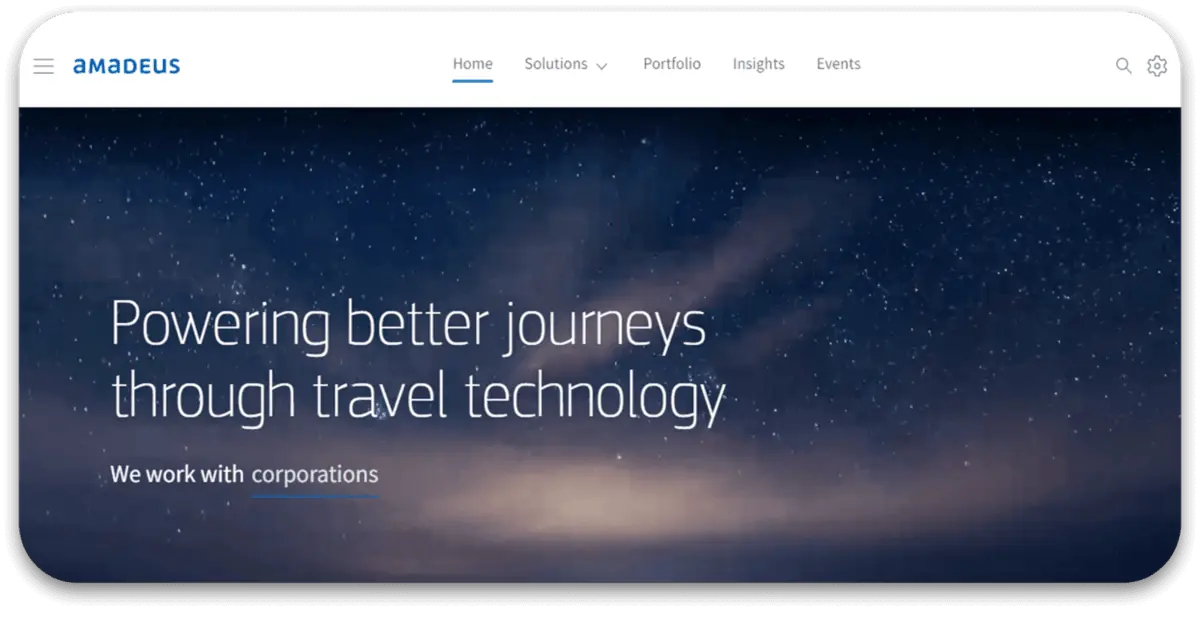
Pros:
- Offers a comprehensive suite of travel solutions
- Global presence for widespread coverage
- Facilitates access to an extensive network of travel suppliers
Cons:
- Costs might be prohibitive for smaller OTAs
- Some users have reported occasional sluggish platform performance
Sabre
Another well-known GDS provider is Sabre, which offers an array of technology solutions catered to the travel industry. Its platform is used by OTAs and other travel firms, thereby granting them access to a rich ecosystem of travel distribution services.
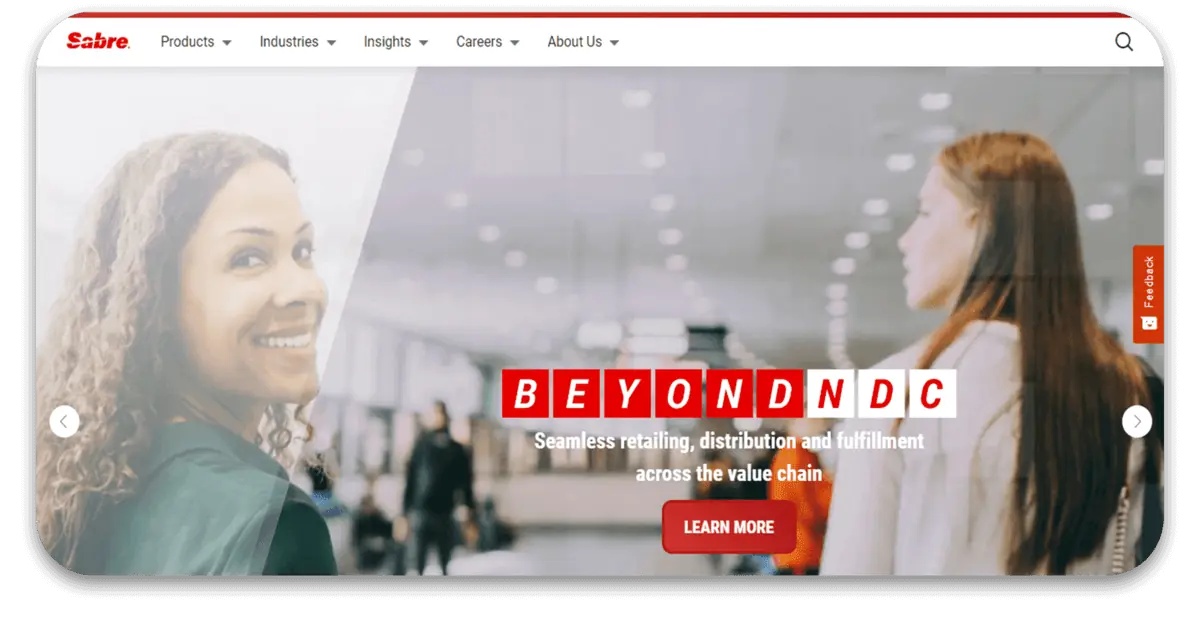
Pros:
- Offers comprehensive travel solutions
- Provides access to a variety of travel vendors
- Has an intuitive platform
Cons:
- Smaller OTAs might find the costs burdensome
- Some users have reported slow customer service response times
Travelport
Travelport, a leading GDS provider, furnishes a variety of travel technology solutions catered to the travel industry. With access to a wide array of travel distribution services, its platform serves as a choice for many OTAs and other travel entities.

Pros:
- Offers a comprehensive suite of travel solutions
- Provides access to an extensive network of travel suppliers
- Features a user-friendly platform
Cons:
- Costs might be a deterrent for smaller OTAs
- Platform performance slowdowns have been reported by some users
- These big players in the GDS market offer a bunch of solutions that fit the travel industry’s moving parts. Online Travel Agencies (OTAs) can make a good decision by checking out these upsides and downsides when choosing their GDS provider.
Factors to Evaluate When Selecting a GDS
When choosing a travel GDS for an Online Travel Agency (OTA) or a hotel global distribution system, a number of business factors arise. These factors are critical in guaranteeing that the selected GDS booking system integrates easily with the OTA’s business processes and operational workflows:
Depth and Width of the Inventory
The Travel GDS provided by the OTA must have a complete range of travel services such as flights, hotels, and car rentals, and other ancillary services to ensure that their customers’ needs are satisfied. These resources greatly determine the direction of the agency’s operations, fulfilling various customer preferences.
Comprehensive Structures
A complete and coherent arrangement of services ensures the sustainability of services in global distribution. Service delivery on the travel GDS must guarantee that information is easy to find and bookings can be also made effortlessly; further adaptability must also be present to guarantee user satisfaction. Agreement Structured also ensures improved operational keystones and service exploration.
Flexibility
Flexibility comes as the need to incorporate additional features into the already existing set up in the travel distribution services. The preferred travel GDS must fit within the OTA’s framework. This will ease the management of the agency’s operations in terms of control over inventory system utilized by travel agencies, control over pricing, and control over bookings, which reduces operational complexities.
Reporting and Analytics Tools
Reporting and analytic tools offered by the travel GDS are incredibly useful. These tools help OTAs track their performance, recognize the shift in volume of activities, and make decisions. Business decisions and strategies are formulated with the aid of these tools.
Pricing
Pricing is one factor that clearly defines the usefulness of a GDS for travel agents. The OTA needs to determine the cost of implementing the GDS booking engine, does it integrate with existing systems. The positive impact derived from the usage of the GDS needs to be greater than the costs.
Support
However, sufficient GDS services is very important for the smooth running of operations. OTAs need to choose GDS that has verifiable 24/7 customer support. The existence of the training also makes it possible for the OTA staff trained to use the GDS functions.
Reputation
Choosing the best global distribution system requires one with a good reputation. A Travel GDS that is well known for its services guarantees trust for the security and customer satisfaction. Trusting the GDS gives the OTA confidence in their choice to partner with them.

Exploring New Distribution Capability (NDC)
The NDC enables airlines to directly interface with travel agents and OTAs via a set of travel APIs designed to optimally showcase their products, and NDC is an acronym for New Distribution Capability. IATA, or the International Air Traffic Association, created NDC using XML. NDC is a more up-to-date version in comparison to the Global Distribution Systems, GDS systems, airline content distribution frameworks, that are employed around the world.
Significance for OTAs
An NDC is considerably important for OTAs since it opens up new opportunities to access a wider variety of airline contents, services such as the selection of seats and baggage fees included. Services offered by OTAs now become more tailored and flexible, thus improving the clients’ experience. NDC also enables them to cut down the commission fees paid through GDS systems, therefore increasing their profit margins.
What are the advancements brought by NDC regarding travel distribution services?
Having the ability to change completely the way airline information is distributed is a huge achievement and highlight put forth by the NDC. Travel distribution services experience improvement in multiple ways:
- NDC allows airlines to provide clearer and tailored detailed descriptions about their products, including ancillary services and the aforementioned availability of seats, and baggage fees.
- It allows airlines and OTAs to communicate directly without the intermediation of travel GDS systems. Efficiency improvements and cost savings can be achieved.
- It allows OTAs to offer more tailored and flexible travel services to their customers.
- It allows OTAs to improve their profit margins by lowering the commissions paid to GDS booking systems.
Advantages of NDC Implementation for OTAs
Overhauling operations with NDC related distribution capabilities will allow OTAs to make use of agile service delivery frameworks which will also help in enhancing competitiveness, profitability, and customer service. Here are a few major benefits for an Online Travel Agency (OTA) having NDC integrated with its system:
1. Customized and Dynamic Travel Packages
Flexibility of NDC application provides OTAs with the ability to create custom travel packages which includes but are not limited to flights, accommodation, rental cars, activities, etc. These packages can be tailored to a traveler’s wish. On top of that, NDC also permits dynamic pricing by character and details of the trip making upselling and cross-selling more viable.
2. Improved services offered
NDC provides full access to information regarding ancillary services such as baggage fee and priority boarding for commercial flights. This allows OTAs to merchandise their travel distribution services better for upselling. Additionally, they can offer more value to their clients through bundled offers by combining ancillary services with some flight deals.
3. Better data driven decision making
With NDC, OTAs get access to a huge amount of data such as customer data, bookings, and transactions. This data is essential for changing consumer behavior, travel patterns, preferences, rest of the products offered, etc. All this data can be used for precision marketing or crafting personalized offers for the target market along with optimized product bundles.
4. Enhanced Beating Competition Strategies
Through the integration of NDC, OTAs can further distinguish themselves in the industry by offering customized deals, advanced tailored packages, and a wider range of ancillary services. This courtesy will most likely appeal to more travelers which leads to increased brand loyalty and further distinguishes them in a saturated competitive travel merchandising ecosystem.
5. Innovative Strategic Planning
NDC is the new era of airline service distribution. Incorporating it into OTA business provides a platform for system and process alignment, realigning to seize forthcoming opportunities. This position enables them to continue staying in front of competition and makes it easy to develop response strategies to changes within the sector.
How NDC adds value to GDS
Let’s study the two-way interaction of NDC with existing GDS booking engines. New Distribution Capability NDC and global distribution systems GDS can work in a synergistic manner for the benefit of OTAs. NDC enhances GDS in various primary ways such as:
1. NDC for content, GDS for transactions
NDC enables the provision of comprehensive flight content including the description, images, videos, seat maps, baggage information, and so on. Travel GDS can still enable the booking of flights but shopping for the flights has been optimized by enriching the content which is provided well before the actual booking takes place.
2. NDC for ancillary revenue, GDS for core flights
NDC allows the sale of airline ancillaries into the OTAs. OTAs can utilize NDC to market ancillaries while still managing the core flight ticket booking through Travel GDS. This approach allows OTA’s gain access to the ancillary revenue without having to modify the existing flight booking engine.
3. NDC for tailored offers, GDS for omnibuses NDC
GDS are used for general flight booking. NDC allows airlines to make customized flight offers and packages based on the traveler profile and trip specifics. These can be marketed through NDC to the travelers who prefer customized options. Travelers still have access to the travel GDS for flights that have already been booked.
4. Incremental Shift to NDC
OTAs can consider a progressive shift to NDC rather than a complete overhaul. They may start with scenarios like retrieval of enhanced content, ancillary services, or custom-tailored promocodes. The breakthrough offerings of NDC, once NDC demonstrates its worth, the volume of NDC bookings can be gradually increased while travel GDS support remains. This approach reduces risks and disruptions to operations.
5. GDS as an NDC content aggregator
Some travel GDS providers are developing NDC content aggregation systems to integrate offers from different airline’s systems. In addition to traditional GDS content, OTAs can now access this consolidated NDC content through travel GDS. This provides easier access through a single platform to all airline offers.
6. Combined Effect
GDS and NDC may be used in combination to add further value for OTAs and their end-users. In this case, GDS booking engines will incrementally add NDC content. Such an approach where GDS is a conduit for ND С, ( NDC) content and global distribution services will serve the long-term interests of the airlines and OTAs.
How NDC-GDS Integration Benefits OTAs?
1. Availability of extensive NDC functionality
GDS systems with NDC capability utilize enhanced NDC content from airlines which includes ancillaries, bundles, rich media, etc. OTAs can access this content and use it to enhance the value provided to travelers. Through NDC content access on travel GDS platforms, OTAs can give their travelers a wider selection of products and services from airlines that have adopted NDC standards. Enriching content consists of ancillaries, fare families, bundles and personalized offers.
2. Improved distribution
For OTAs, these systems serve as a single point of access to numerous airlines. Thanks to NDC, GDS systems are able to aggregate NDC content from many airlines and, with their partnerships with OTAs, distribute it seamlessly through a single integration. Otherwise, Travel GDS platforms have many integrations with various airlines and OTAs. Once they enable NDC, they can redistribute NDC content to all these partners through established connections. This provides a simplified distribution procedure that eliminates step-by-step integration of airlines and OTAs.
3. Scalability
Platforms GDS are designed to distribute travel content on a large scale. With the introduction of NDC, GDS systems now allow OTAs to efficiently distribute NDC offers to large numbers of travelers. Travel GDS systems have already demonstrated the capability to distribute travel products at a high volume. NDC compliant GDS systems apply this scalability to NDC content where OTAs are able to provide more NDC offers to travelers seamlessly.
4. Interoperability
NDC compliant GDS systems are capable of translating and normalizing NDC messages into a format which aligns with the OTA’s infrastructure. This solves the interoperability problem and enables OTAs to work with NDC without heavy changes to their system. Whenever there are changes in NDC standards, GDS systems ensure that their NDC adapters are up to date and deal with changes in protocols for the OTAs. These augmentations reduce the effects NDC updates have on OTAs while making sure there is interoperability regardless of the changes made over time.
5. Reduced costs
Merging with GDS systems as opposed to individual airlines helps in conserving expenses and resources associated with technology integration and its maintenance. NDC offers a lower-cost gateway for OTAs to access NDC content through GDS systems. The direct link to several airlines is expensive in terms of time, finances, and technical resources. GDS systems provide a single point of integration and a common system that eliminates redundant work, thus lowering costs.
6. Booking flexibility
More elaborate bookings, such as multi-airline itineraries with ancillary services, can be made with NDC. NDC-compliant GDS offer support for such complex itineraries, thereby increasing options for travelers. They also aid in re-accommodation during service interruptions. NDC allows for customized, ancillary and rich content that enhance traveler options. Such complex bookings can be efficiently handled for changes, cancellations, and servicing. This level of flexibility is made available to OTAs through GDS integration.
7. Future-proof
Through using travel GDS systems that are compliant with NDC standards, OTAs can ensure their model of distribution does not get left behind relative to the rest of the industry. NDC GDS systems also allow OTAs to foresee trends and modify their businesses to newer retailing paradigms. GDS providers make sure their NDC adapters are up to date with the latest versions of the standard. Travel GDS systems enable OTAs to maintain their NDC distribution channels and ensure compliance with all set guidelines, while also keeping pace with the future of airline retailing and merchant model airline retailing.
8. Key Takeaway
Through compliant GDS systems, OTAs are able to access the advantages of GDS technology and NDC using a scalable and cost-effective way. For OTAs, the merger with GDS systems represents an opportunity to access NDC content with little disruption to operations.
Choosing the Right GDS for Your OTA

You should be cautious owing to the complexity of factors that include costs, compatibility and services to be chosen while selecting a Global Distribution System (GDS) for your Online Travel Agency (OTA). These considerations are key in selecting the GDS that will be and aid you in the future.
1. Audiences and Area of Coverage
Make sure the geographical area of operation of the GDS servicing your OTA fits with your ideal clients. Every GDS system provides service to certain unique customers, therefore their content and GDS capabilities need to closely relate to the focus of your OTA. Also, make sure to analyze coverage in your business regions.
2. Integration with Lots of Other Systems
How well can the GDS be integrated with other systems for example booking engines, mid and back offices, payment processors among many others? Considerable GDSs that have open source APIs need to be given priority alongside well documented technical and integration support.
3. Pricing Strategies and Expense Framework
GDS fees are commonly made up of the initial payment and the recurring payment of transaction fees. As mentioned earlier, it is important to study the GDS providers’ pricing models in detail to select the one that fits your OTA’s finances and its operational framework. In addition, some GDS systems may offer other forms of incentives and even subsidized payments for paying OTAs. These benefits could be helpful regarding your business growth.
4. Customer Care and Education
The hereto undiscussed area of customer care support has always remained part of standard functionality. Examine their support range to include all relevant documents, training materials, consulting books, and access to customer support channels. It is important that the GDS booking system is compatible with the client’s location, which means all relevant geographic regions and time zones, and that the training is remote and self-paced.
5. Overall Evaluation of a Product
Evaluate the different products offered by the GDS booking system. It involves the appraisal of the search and booking engines, mid-office and back-office modules, and analytics a platform along with the list of tools they provide. Having these features should depend on how demanding the OTA’s wished operational and technical conditions are. In addition, look into what the GDS commits to in terms of functional enhancement and advancement through their future roadmaps.
6. Partners and Content
Your ability to offer high quality travel options to your customers can be deterred by the accessibility and the diversity of the travel suppliers at GDS booking systems. Make sure that GDS booking system has access to a full range of airlines, hotels, car rentals, and other travel distribution services which is in congruence with the OTA’s offerings and customer preferences.
7. Technology and Innovation
Make note of how different technological innovations have been incorporated into the GDS booking system. NDC implementation, the use of artificial intelligence, and cloud service integration all can affect the capabilities and potency of the GDS booking system. Although innovation is a good thing, it should not compromise strong, validated controls, technologically.
Integrating GDS with NDC Capabilities
How GDS providers are adapting to NDC standards?
Amid the dynamic terrain of travel technology, GDS global distribution system providers are strategically evolving through the integration of New Distribution Capability (NDC) standards into their well-established frameworks. This integration gives a substantial advantage to GDS providers for expanding their coverage and extending an exhaustive range of content and services to clients, including customized travel packages and an even broader range of additional services.
The synergy between traditional GDS and NDC
The relationship between traditional GDS and NDC is symbiotic, whereby both systems coexist and enhance the functionalities of one another. Conventional GDS systems serve as gateways to a vast array of travel products and services, while NDC paves the way for the dissemination of dynamic and tailor-made travel propositions. Through the integration of NDC features within their existing infrastructure, GDS providers elevate their capacity to deliver an enriched portfolio of travel options and services to their customers.
Tapping into dual systems for competitive leverage
The convergence of these systems poses an advantage for Online Travel Agencies (OTAs). By expanding their travel product and services, OTAs could attract more clients and competitive edge. The integration of NDC functions into the existing frameworks of GDS enables OTAs to offer tailored travel packages and extensive ancillary services, which have conventionally been available only through direct airline sales channels. With these strategies, OTAs can further position themselves as industry leaders, propelling growth along with differentiation from competitors and fostering greater customer loyalty.
Most effective measures for GDS implementation successful results
1. Evaluate Business Requirements and Goals
Start from assessing clearly your technical and business needs. Doing an evaluation of requirements needs to be done in regard to content, features, integration, as well as the costing. With GDS you have established goals which measures its implementation effectiveness like conversion rates, bookings volume, time saved and data quality.
2. Plan Allocation for Integration and Data Migration
There should exist a plan on how to integrate the GDS into the current systems already in use within the institution. Create a roadmap that clearly indicates how data is to be moved from the old platforms to the new GDS in the most precise and safe manner. Ensure that there are funds and time set aside for integration and thorough testing.
3. Staff Training Provision
Develop comprehensive training sessions so that your staff is adequately trained on how to use the new GDS platform. Integration of manuals, video recordings, webinars and even practical sessions will greatly assist. Encouraging further learning and skill building resources should be provided for readiness and skill level aid.
4. Performance Monitoring
These consist of specific numbers and expectations. Make sure that the GDS booking system is meeting your requirements. Ensuring that settings are adjusted where needed alongside these resources should be mandatory. Your GDS account manager should consulted on a regular basis to shed light on changes needed.
5. Start a New Pilot Program
Try to execute the GDS for a certain group of products, suppliers, or customers first. This gives you the opportunity to test the new system on a small scale before implementing it everywhere. Use the pilot phase to test the integration, evaluate performance, identify problems, and make adjustments.
6. Allocate Internal Resources
Assign the needed personnel to implement GDS as a project. They will handle business analysis, technical integration, system testing, training, and training. Having dedicated resources helps to ensure proper and effective implementation of the GDS.
7. Reasonable Follow Ups
Collaboration with the GDS provider should continue after the actual implementation. This is important so that scheduled meetings for report reviews, improvement discussions, problem-solving, and alignment on future plans can be held. This is essential to maximize the benefits achieved from the GDS investment.
Seamless GDS Integration for OTAs: OneClick’s Expertise!

As an OTA, having the ability to integrate rich travel content through a GDS booking system increases service offerings and future business potential. However, th step requires significant time, resources, and expertise. At OneClick IT Consultancy, we prioritize GDS integration for OTAs. We value your time and offer the following reasons to choose us as your first call:
1. ARMI Certification
OneClick is proud to mention that we are one of the 30-35 global companies to possess ARMI certification. This allows us to implement NDC Compliance. As ARMI certified, mid and back office systems we enhance business effciencies at GDS integration in no time. We’re able to do this due to having best in class compliance systems technology.
2. Domain Proficiency
OneClick goes far beyond having the technical skills of an IT company. We have in-depth GDS and travel industry knowledge. OneClick’s experts understand the many different GDS systems and the pace and operations of the OTA world. This understanding ensures that the GDS booking system integrates with your business model and not the other way around.
3. Resource Efficient
Investment in time, money and staff for setting up GPS systems is enormous. Outsourcing to OneClick for example, gives you a whole new team of professionals that allows you to meet your GDS goals without burning critical internal resources. Our services are designed to help you maximize your investment by letting your business adopt GPS features quickly.
4. Ready for the Future
One Click NDC monitors the technological changes like NDC, ONE Order, and Data Protection. We will ensure your GDS implementation and strategies will be eased through proactive operational strategies that anticipate new agile business requirements and growth opportunities.
OneClick’s Comprehensive GDS integration solutions
- Deep dives to identify your specific needs
- Integration of GDS with booking engines and mid/back office systems is done on a technical level.
- Information migrations for smooth change over of datasets.
- Pre-deployment QA processes and testing for agile deployment.
- Improvement of staff efficiency with ongoing support and GDS system training.
- Dials of value extracted from GDS: continuous optimization efforts.
As an OTA looking for expert integrational partners for GDS integration, OneClick becomes your absolute choice, as the business’s goals and objectives are met professionally and seamlessly based on our vast expertise and experience. Contact us today to discuss how GDS integration can help your OTA achieve more.
Emerging Patterns Associated with GDS and NDC
The Prism range of GDS global distribution system and New Distribution Capability (NDC) technologies are steadily developing in response to the requirements in the travel industry. Below are some that are likely to be encountered with GDS and NDC technologies:
More Targeted Customization
GDS and NDC systems are progressing towards more individualized travel itineraries that cater to particular needs of a traveler as more providers look for solutions to enhance their booking processes associated with effortless booking experiences.
Increased Usage of AI
AI has more responsibilities within GDS and NDC systems as they make use of AI for sophisticated retrieval searches, enhanced customer interaction, and improved overall traveler satisfaction. This will remain the case as AI technology is developed and more broadly implemented.
Further Solutions on Data Analytics
The GDS and NDC technologies are providing richer data concerning the customer’s behavior and preferences. Such information is critical in improving marketing, product, and customer service. This development will continue as providers of travel services strive for a competitive advantage using data insights.
The evolution of the travel industry comes with a need for OTAs to scrutinize which GDS to work with and consider NDC integration to improve booking experiences. OneClick provides other GDS integration solutions which could be ideal for someone searching for a veteran guide to support them throughout this merging. With knowledge of these technologies, we ensure that your OTA does not fall behind industry standards.


